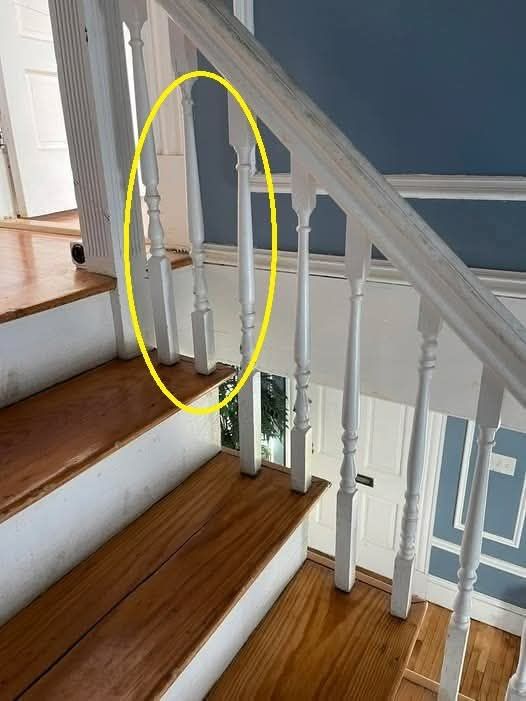
In architecture, a baluster (the vertical post in a railing) is usually uniform—but when one is deliberately installed upside-down, it sparks curiosity. Was it a mistake? A secret symbol? Or something darker?
Possible Explanations for the Upside-Down Baluster
The “Carpenter’s Mistake” Folklore
Some claim it was an intentional error by builders to show humility—a nod to the idea that “only God is perfect.”
Others say it was a signature left by an apprentice who wasn’t allowed to sign their work.
Superstition & Protection
In old European traditions, an inverted baluster could ward off evil spirits—like a deliberate flaw to confuse demons.
Similar to witch marks (apotropaic symbols) carved into beams for protection.
Hidden Messages & Rebellion
During oppressive regimes (e.g., slavery in the U.S.), some theorize upside-down balusters were secret signals for safe houses or escape routes.
In churches, it might’ve marked heretical symbolism (e.g., pagan influences).
Structural Quirk or Repair
Less mysteriously, it could’ve been a repair job where the replacement piece was installed incorrectly.
Famous Examples
Monticello (Thomas Jefferson’s Estate): One upside-down baluster on the west portico—debated as either a mistake or a philosophical statement.
Old European Castles & Churches: Some staircases feature a single inverted baluster, often near entrances (possibly for protection).
Modern Interpretations
Artistic Statement: Contemporary architects sometimes flip balusters for avant-garde designs.
Internet Mystery: TikTok and Reddit users now hunt for “ghost balusters” in old homes, speculating about hidden histories.
Why People Still Care
The upside-down baluster blurs the line between craftsmanship, folklore, and conspiracy. Whether a mistake or a message, it reminds us that even in rigid structures, there’s room for mystery.
Have you ever spotted one? Some say it’s good luck—others warn it’s a ghost’s handiwork…
(Fun fact: Inverted symbols appear in other trades too—like “deliberate knots” in quilts or “misplaced bricks” in walls.)
Would you dare flip a baluster in your own home?